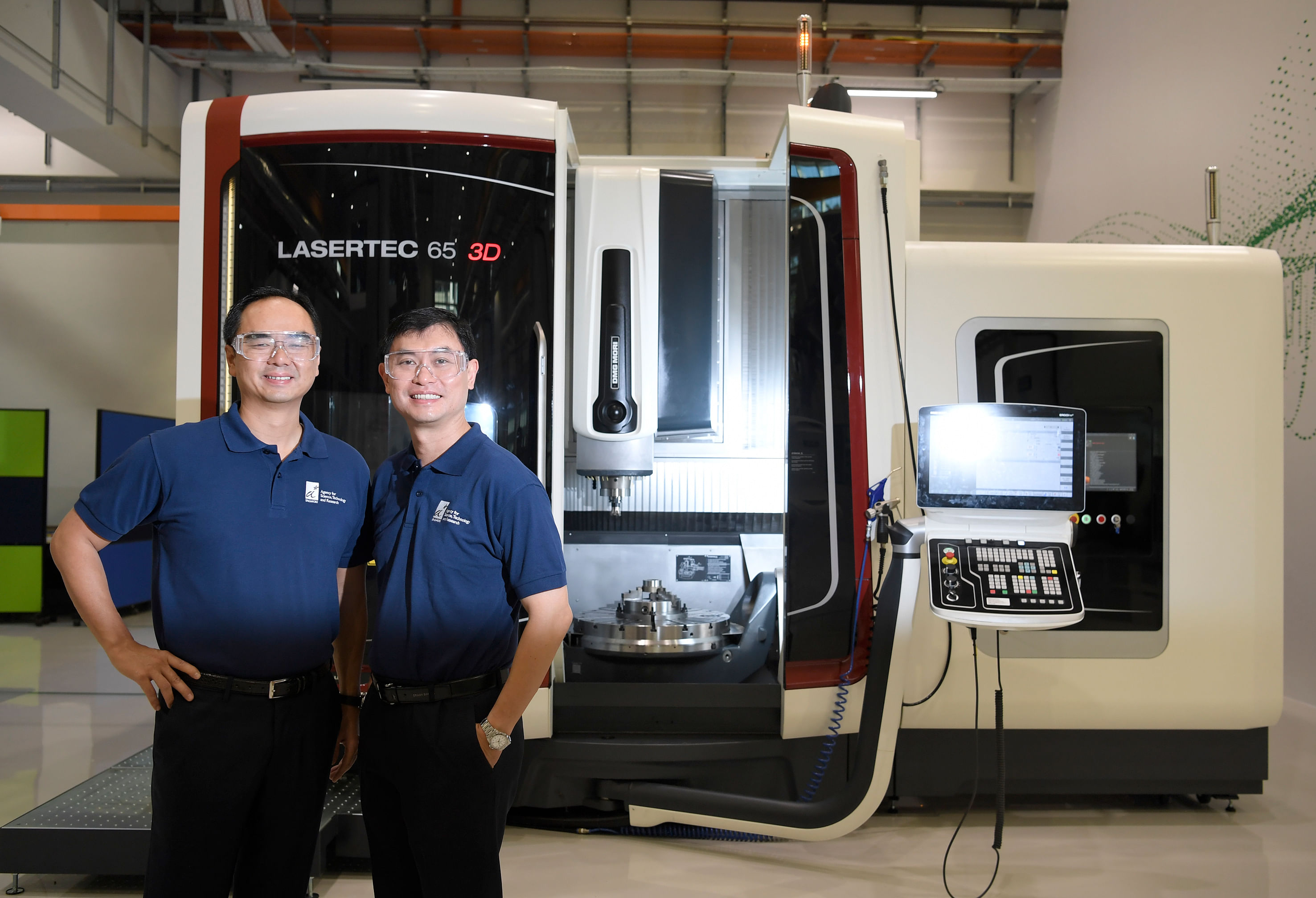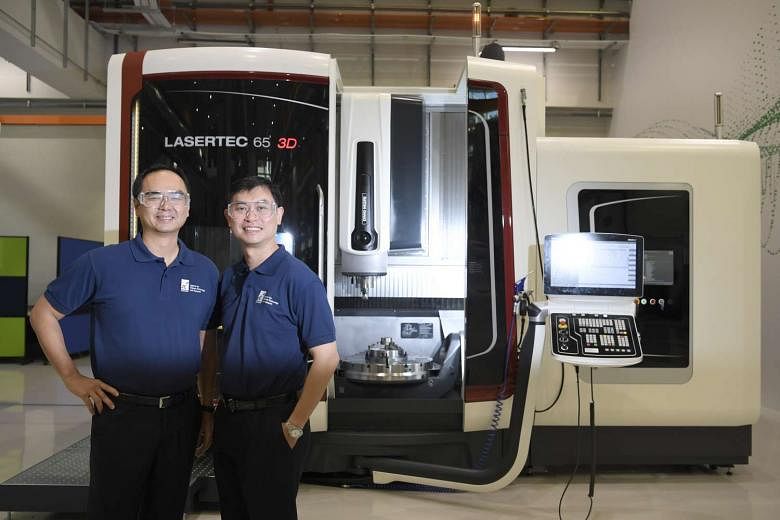Is there a future for manufacturing in Singapore?
This is one of the big questions facing the country as it looks for ways to grow the economy, which has been struggling for some years now.
Some answers might be forthcoming from the Future Economy Committee, which is due to present its report soon.
It is likely to recommend that manufacturing continues to play an important role.
You just have to look at the job numbers to know why: The livelihood of 500,000 workers is at stake in this sector, about half of whom are Singaporeans and permanent residents. There are also jobs in finance, insurance, transport and logistics that support manufacturing companies which might disappear if this place wasn't a vibrant manufacturing base.
But there's no running away from the reality that manufacturing is shrinking in Singapore, as it is in many parts of the developed West.

Its share of the economy has fallen from 28 per cent in 2005 to 18 per cent today.
Here is one other stark statistic: There are almost as many people here doing wholesale and retail jobs as there are in manufacturing.
If the trend continues, Singapore might become more of a nation of people who sell stuff rather than make them.
So, what can be done to reclaim its place in the economy and what exactly should Singapore make?
For some answers to these questions, I visited the Advanced Remanufacturing and Technology Centre (ARTC), an A*Star initiative in partnership with the Nanyang Technological University.
Tucked away in the western corner of Singapore, the ARTC building looks nondescript.
-
What ARTC can do
Advanced Remanufacturing and Technology Centre (ARTC) is part of A*Star's effort to undertake research that helps Singapore companies improve their capabilities. It does this through working with each of the 42 member companies that have joined ARTC. This ensures the work being carried out is relevant and in response to real problems faced by these companies.
The areas that ARTC specialises in include:
ADDITIVE MANUFACTURING
This is the industrial version of 3-D printing to manufacture complex parts to high precision which would not be possible, or which might be too costly, using traditional methods such as machining and casting. The parts are built layer by layer from powder material fused together by laser. Examples include aerospace parts such as fuel nozzles and engine components, and medical implants.
ROBOTICS
Machines can often do the work better than humans with greater precision and speed. Using robots in manufacturing is an idea whose time has come and is being adopted by many manufacturers. It is especially relevant for Singapore, where the workforce is declining and ageing. In Singapore, the promising areas are in the aerospace and marine industries and companies looking to reduce reliance on labour.
REPAIR AND RESTORATION
When parts fail or need to be refurbished, it is often cheaper to repair and restore rather than replace the entire component. But this has to be done with precision and to exacting standards, using sophisticated technology to measure and to fabricate, machine or remanufacture the parts.
Remanufacturing is a growing area because it is less wasteful and the technology is now available.
But step inside and the future beckons.
Dr David Low is CEO of ARTC and he is telling me what they do here to help Singapore companies step up their game.
Forget about the traditional ways things are made, such as machining, moulding and casting.
The future is about additive manufacturing, which is the industrial version of 3-D printing, and robotics.
It's a completely different way of thinking about how to design and make complicated parts using robots, digital technology and powerful computers.
Think of the way you build a sandcastle at the beach by hand but with a million times more precision and complexity, building it layer by layer using material in powder form that is fused together by laser.
Using this technology, Rolls Royce, the British aircraft engine maker, which has an assembly and test facility in Singapore, is working with engineers at ARTC to improve the manufacturing of its engine blades.
It is a unique feature of ARTC's set-up that it is not doing research in the hope that industry might find it useful.
Instead, the work is done in collaboration with companies which are members of ARTC - there are 42 today - working on real problems they face.
Why focus on additive manufacturing?
It is a growing field in aerospace engineering and Singapore has the most comprehensive repair and overhaul facilities in Asia, with a quarter of the market share.
There is an element of picking winners, a risky business in the fast-changing world, but ARTC is betting that Singapore will continue to be an aviation hub.
But it is not just the big boys being helped.
I am introduced to AmpTec, a local company which specialises in industrial cleaning of ducts and vents in kitchens and factory premises, using dry ice-blasting.
The work was previously done manually but, with ARTC, it developed a robot-cleaning machine that fits inside ducts and confined spaces.
Sankei Eagle is another small and medium-sized enterprise (SME) that has benefited from ARTC's expertise. It used to employ large numbers of foreign workers to manually apply masking tape to components before they were worked on. Now, the work is done by a machine which coats the parts with a protective chemical layer that can be burnt off later at high temperature.
It is a high-tech masking tape solution that does away with cheap, unskilled workers.
The company was previously hit by the electronics downturn and decided to move into new engineering areas. But it would never have been able on its own to sell its services to aerospace and marine companies without ARTC opening the doors for it.
Robotics is a big part of ARTC's work because machines are far better at doing precision and complicated work than humans.
Singapore has entered the game late and is far behind countries such as Japan, the United States, Germany and even China.
It cannot compete in the making of these robots but it can help local companies make use of the new technology to reduce their dependence on labour.
This makes sense here as the workforce is declining and ageing, and wage levels are higher than in other emerging economies.
The logic is clear but how to get more Singapore companies, especially SMEs, on board?
There are more than 9,000 of them in manufacturing alone but only a handful are involved in ARTC's work.
I put the question to Prof Tan Sze Wee, who heads A*Star's Science and Engineering Research Council, which promotes public-sector research in science and engineering.
He recognises the scale of the problem and is pushing the idea of innovation brokers, people who can link researchers to companies.
He is thinking of those in their 40s and 50s who have worked in industry and are now looking to do something different.
"If each of them can reach out to 10 companies at a time and we have 1,000 of them, we can get to the top 10,000 SMEs."
It is an idea worth pursuing because this brave new world demands new ways of thinking and solving problems.
It helps also if you have people from different backgrounds and expertise, from industry and academia.
I like what I hear at ARTC about the need for diversity when doing innovative work.
The oldest worker here is a 79-year-old Japanese expert in machining, the youngest is 20, one- quarter of the staff are PhD holders, half have basic degrees and the rest are from the polytechnics and ITEs.
Dr Low was a polytechnic graduate before he obtained his PhD from the University of Manchester Institute of Science and Technology.
Prof Tan graduated with a medical degree, practised as a doctor and founded a start-up biotechnology company, Rockeby Biomed, before he joined A*Star.
In a small country like Singapore, you have to make a conscious effort to have a diverse workforce.
ARTC has its work cut out for it but it is only one part of the national effort to restructure the economy.
To get more Singapore companies to become world-class requires a cultural shift in the people, to one which is prepared to learn new skills, master them and become the best in their field.
It is especially important in manufacturing because the expertise involved requires deep knowledge of both the technology and the market, and dedication to the craft. That is how the best Japanese, German and American companies do it.
It also requires an education system that is not overly focused on academic achievements but which develops effective habits of learning and problem-solving.
ARTC will not change manufacturing here in a big way.
But without it, Singapore's chances of making it would be diminished.
•The writer is also a Senior Fellow at the S. Rajaratnam School of International Studies.


